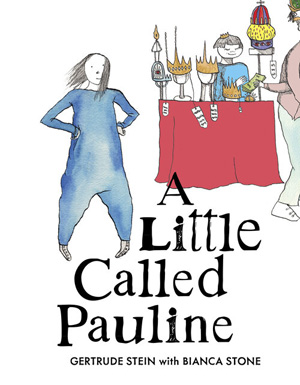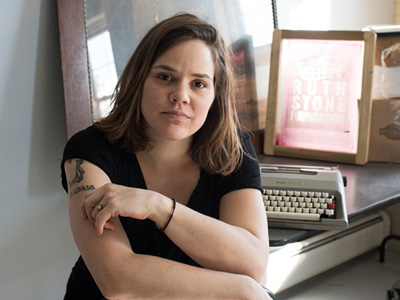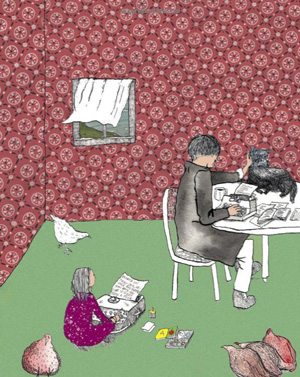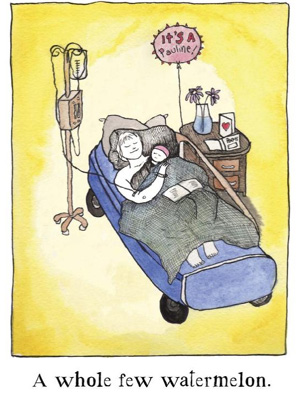|
In 1934, Margaret Wise Brown (author of Goodnight Moon and The Runaway Bunny) asked Gertrude Stein if she would write children’s books for Young Scott Books. Brown came up with the idea to ask famous writers if they would do this and was turned down by Hemingway and Steinbeck. Stein said she would do it and, in fact, she had a manuscript that was almost ready for consideration—The World Is Round. This book was a success and it was illustrated by Clement Hurd, who had done the artwork for Brown’s two well received books.
As a follow-up to The World Is Round. Stein wrote To Do: A Book of Alphabets and Birthdays. Alice B. Toklas, Stein’s lifelong partner, said of this work, “it is too old for children and too young for grown-ups.”
THE STEIN-STONE COLLABORATION
Penny Candy Books, an independent children’s book publisher founded in 2015 and based in Oklahoma City, OK, and Greensboro, NC, has published A Little Called Pauline, a beautiful picture book by Bianca Stone with text taken from Gertrude Stein’s long poem Tender Buttons. The Steiny Road Poet calls this book a collector’s item, but not particularly a children’s book.

Steiny is well aware that the philosophy of Penny Candy Books is “Small press. Big conversations.” This means that founders Alexis Orgera and Chad Reynolds (both poets) believe that children can handle hard-to-understand subject matter and this will build character resulting in healthy and sensitive adults who will think for themselves and who will create a better planet and society. Steiny applauds this approach to publishing children’s books.
WHO IS THE COLLABORATING ARTIST?

Bianca Stone is a poet and a visual artist. She is author of two poetry collections: Someone Else’s Wedding Vows (Tin House/Octopus Books, 2014) and Poetry Comics from the Book of Hours (Pleiades Books, 2016). Her grandmother was poet Ruth Stone and Bianca is executive director of The Ruth Stone Foundation, an organization dedicated to the furthering of poetry and the arts as well as preserving Ruth Stone's legacy and house in Vermont.
READING THE PICTURES
The pictorial story concerns the birth and growing up of a girl named Pauline and her single mother. They live by the sea in a house built on stilts. One day in the market, Pauline sees a merchant who is selling crowns and she wants one for her birthday, but her mom doesn’t have the money for that. Pauline throws a fit. That evening friends of her mom gather for Pauline’s party, but Pauline climbs out the window and gets into a boat and rows out to sea. Things go wrong, but the adults have missed the birthday girl and come to her rescue. She gets her crown but now knows the best gift is the love of family and friends.

RECITING THE TEXT
While Gertrude Stein is known for poetry that sounds like nursery rhyme, discerning a coherent story is, at best, difficult. Furthermore, Tender Buttons, a highly coded work, was never intended to be a children’s poem. Here are the opening lines:
A LITTLE CALLED PAULINE.

A little called anything shows shudders.
Come and say what prints all day. A whole few
watermelon. There is no pope.
No cut in pennies and little dressing and choose
wide soles and little spats really little spice.
A little lace makes boils. This is not true.

HOW DO THE STEIN & STONE STORIES CONNECT?
Steiny has studied and written extensively about Tender Buttons, which she sees as Stein’s love poem to and marriage covenant with Alice Toklas. What the two women agreed to was that Stein’s books would be their babies (“Come and say what prints all day.”) However, Tender Buttons also depicts their life together and the people around them. Through Pablo Picasso, Stein met poet Guillaume Apollinaire and artist Marie Laurencin, who to some degree were lovers. (It’s unclear because Laurencin spurned him and pursued a life as a Lesbian.) Laurencin’s mother, a seamstress, was named Pauline. Pauline never married Marie’s father who belonged to the upper class and, according to Stein, the two women lived a monastic life (with “no pope” meaning, no male in their household.) Synchronistically, Apollinaire was raised by a single
mother as well. The joke in Picasso's circle was that Apollinaire was the bastard son of a pope.
If a reader were to know these stories from Stein’s life, then this reader might see these points in common between Stein’s text and Stone’s images:
- Birth of a child
- Love story between mother and daughter (the daughter imitates her mother—Pauline refuses to wear the dress sent by her grandmother for her birthday—“a little lace makes boils”—because her mother wears pants and she wants pants too. Also Pauline writes when her mother writes.)
- The mother, daughter, and friends are outside cultural norms (Pauline and her mom live isolated in a house on stilts and her mom’s friends—Pauline doesn’t seem to have any peers in her life—include a bearded lady, an anthropomorphic rabbit, and an assortment of people of color.)
- Elements of fairytale/myth (house on stilts, humanoid rabbit, the fairy sea, the child’s desire for a crown)
The problem is that few adults know how to approach Tender Buttons and would be unwilling to do the work necessary to learn about Stein. So approaching the subpoem “A Little Called Pauline” is expecting too much of anyone, let alone a child, unless the child is exceptionally precocious and has a rich imaginary life.
Steiny had the book shown—by a parent or grandparent—to two sets of girls, ranging in age from seven to thirteen years old. Steiny believes the book would appeal to girls and not particularly to boys since there are few male figures (if any) in the pictorial story. The consensus was the pictures were interesting, but the text was “hard to follow.” In other words, the pictorial and textual stories do not easily connect. Better to leave this beautifully produced book to the Gertrude Stein collectors.
|